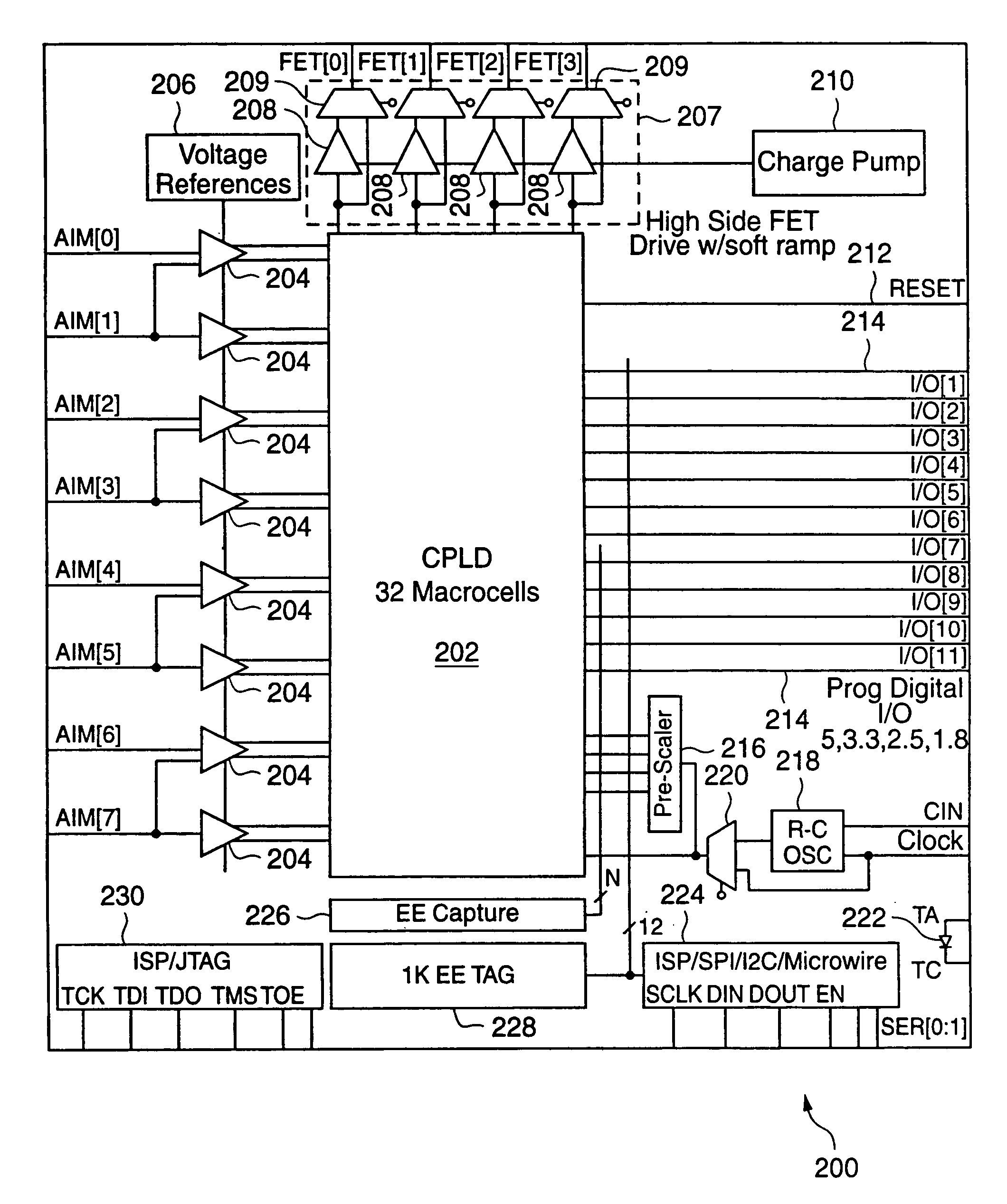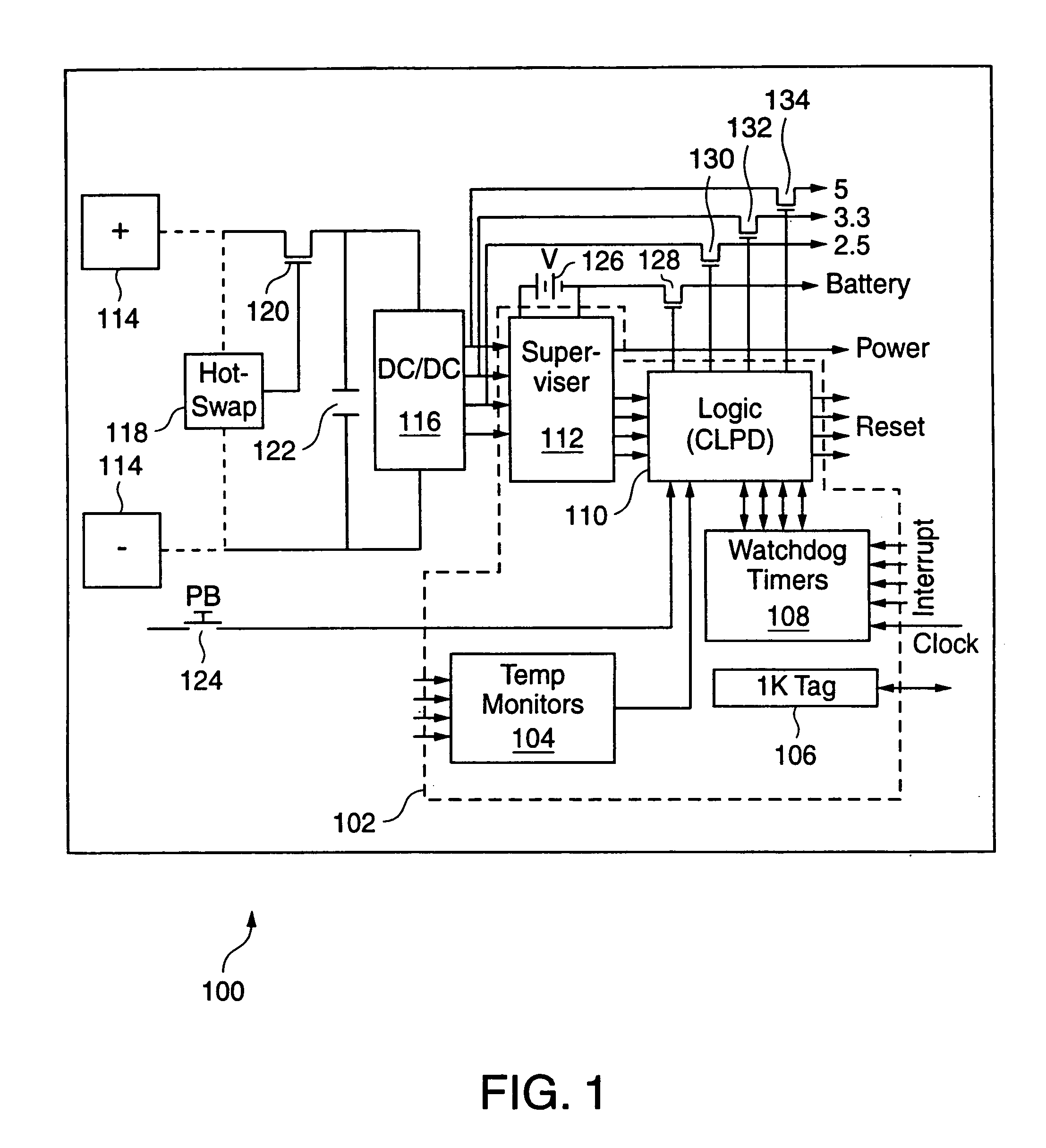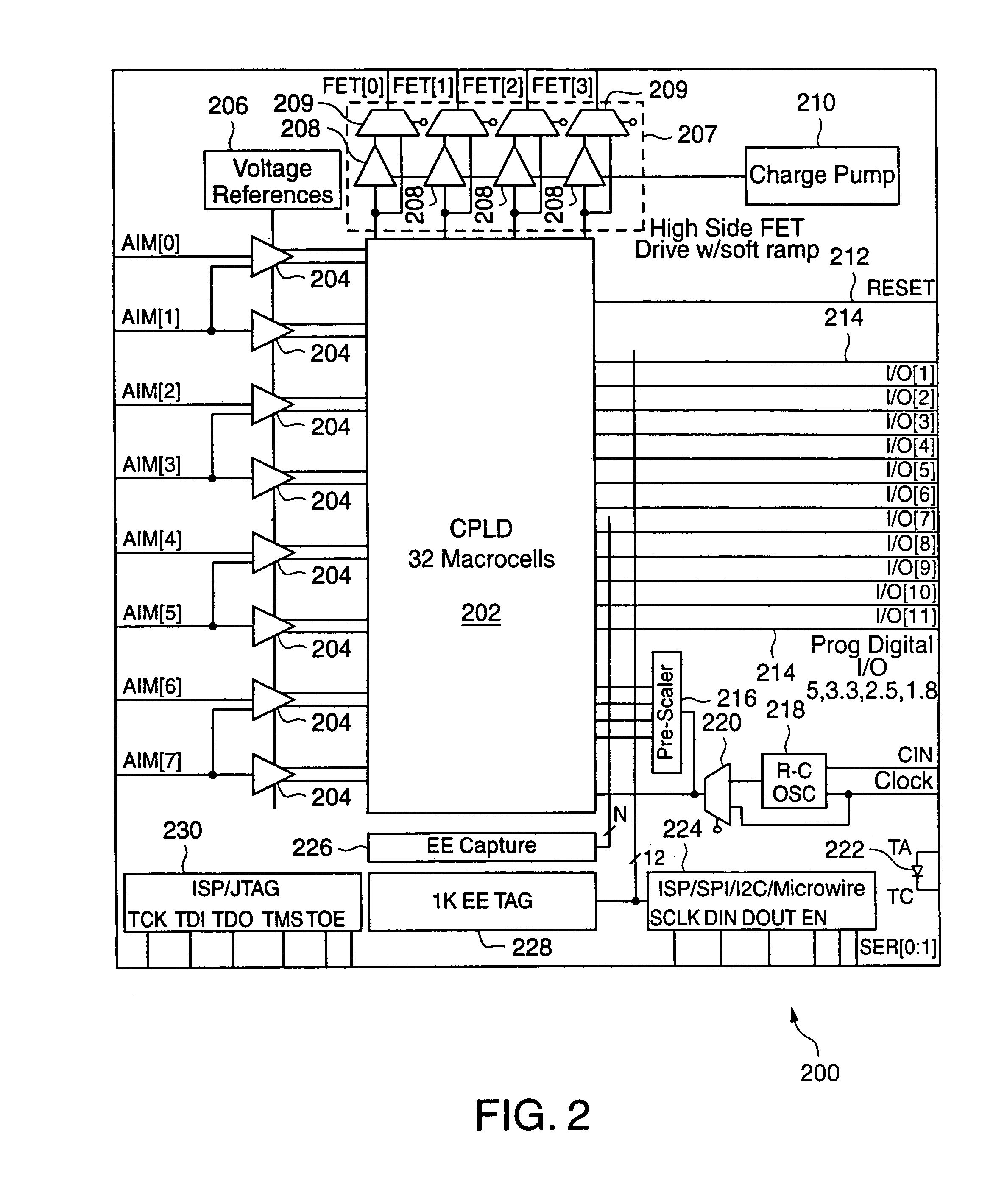Programmable power management system and method
a power management system and programmable technology, applied in the field of electronic devices, can solve the problems of increasing the size and complexity of the overall system, requiring many discrete and specialized integrated circuits, and many components that cannot tolerate significant voltage swings or power supply interruptions
- Summary
- Abstract
- Description
- Claims
- Application Information
AI Technical Summary
Benefits of technology
Problems solved by technology
Method used
Image
Examples
Embodiment Construction
[0029]FIG. 1 illustrates an exemplary block diagram for a system 100 incorporating a programmable power management system 102 in accordance with an embodiment of the present invention. System 100, which illustrates a portion of an electronic device or system, includes a high direct-current (DC) supply voltage 114 having positive and negative terminals that feed a DC-to-DC (DC / DC) converter 116. A capacitor 122 provides signal conditioning and a hot-swap selector 118 controls a transistor 120 that allows the selection of supply voltage 114. DC / DC converter 116 generates a number of DC voltage outputs that are monitored by programmable power management system 102 and that are also supplied to various components of the electronic device (not shown). For example, DC / DC converter 116 may generate DC voltages of 5 V, 3.3 V, 2.5 V, and 1.8 V.
[0030]Programmable power management system 102 includes a supervisor circuit 112, logic circuit 110, watchdog timers 108, a memory (e.g., 1 K tag memo...
PUM
 Login to View More
Login to View More Abstract
Description
Claims
Application Information
 Login to View More
Login to View More - R&D
- Intellectual Property
- Life Sciences
- Materials
- Tech Scout
- Unparalleled Data Quality
- Higher Quality Content
- 60% Fewer Hallucinations
Browse by: Latest US Patents, China's latest patents, Technical Efficacy Thesaurus, Application Domain, Technology Topic, Popular Technical Reports.
© 2025 PatSnap. All rights reserved.Legal|Privacy policy|Modern Slavery Act Transparency Statement|Sitemap|About US| Contact US: help@patsnap.com



